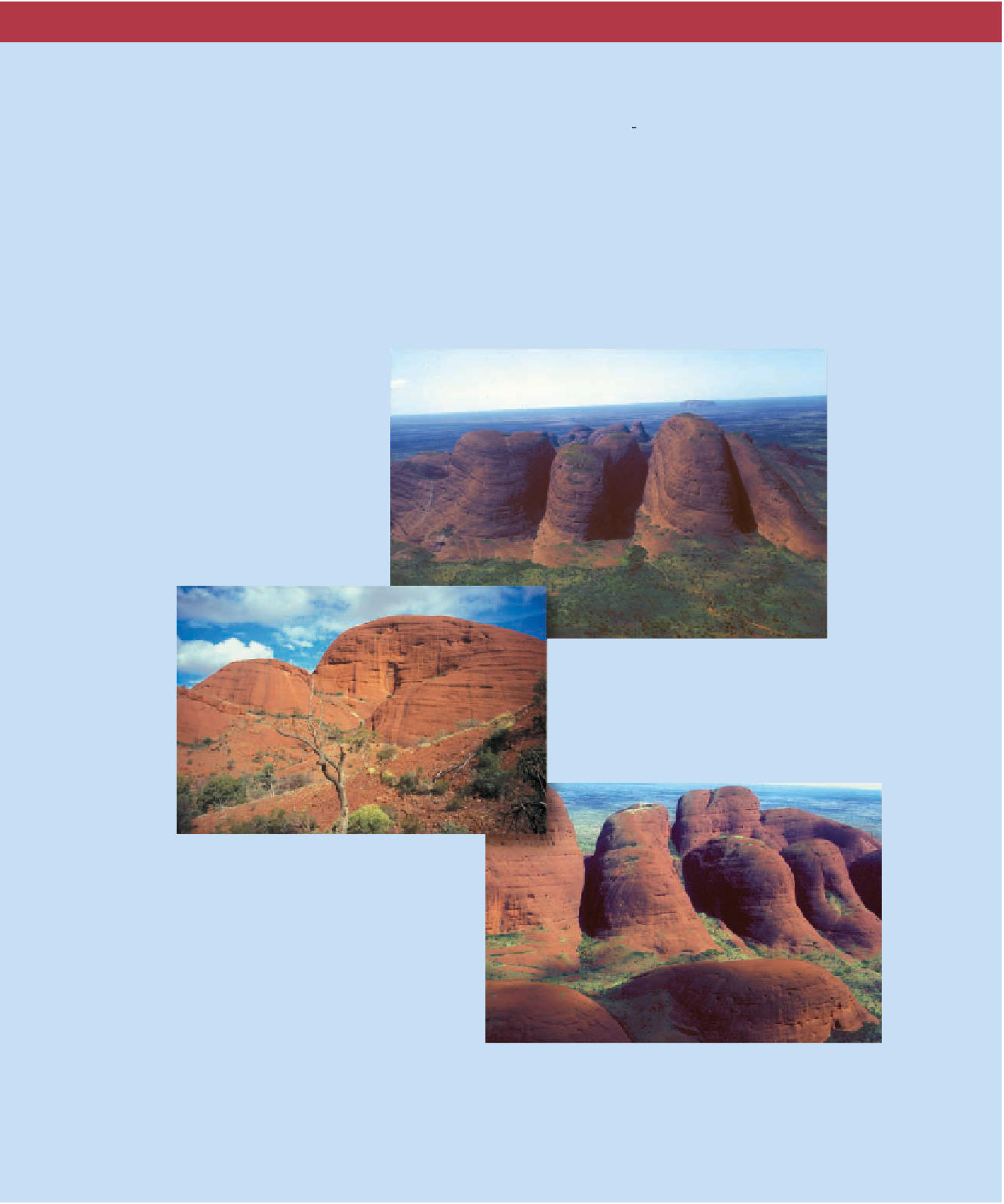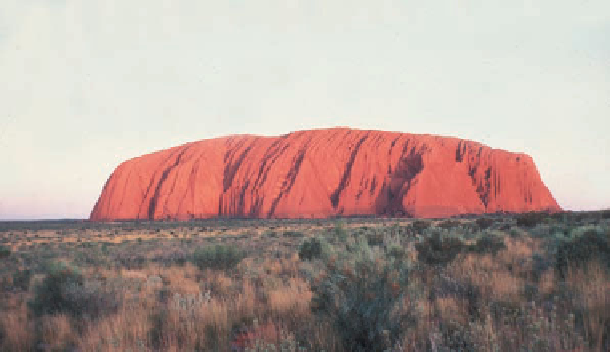Geology Reference
In-Depth Information
4. Uluru at sunset. The near-vertical
tilting of the sedimentary beds of the
Uluru Arkose that make up Uluru
can be seen clearly. Differential
weathering of the sedimentary
layers has produced the distinct
parallel ridges and other features
characteristic of Uluru.
5. Aerial view of Kata Tjuta with Uluru
in the background. Kata Tjuta is
composed of the Mount Currie Conglomerate,
a coarse-grained and poorly sorted
conglomerate. The sediments that were
lithified into the Mount Currie Conglomerate
were deposited, like the Uluru Arkose,
as an alluvial fan beginning approximately
550 million years ago.
6. A view of the rounded domes of Kata Tjuta
and typical vegetation as seen from within one
of its canyons. The red color of the rocks is the
result of oxidation of iron in the sediments.
7. An aerial close-up view of Kata Tjuta. The distinctive dome
shape of the rocks is the result of weathering and erosion of
the Mount Currie Conglomerate. In addition to weathering,
the release of pressure on the buried rocks when they were
exposed at the surface by tectonic forces contributed to
the characteristic rounded shapes of Kata Tjuta.
457














Search WWH ::

Custom Search